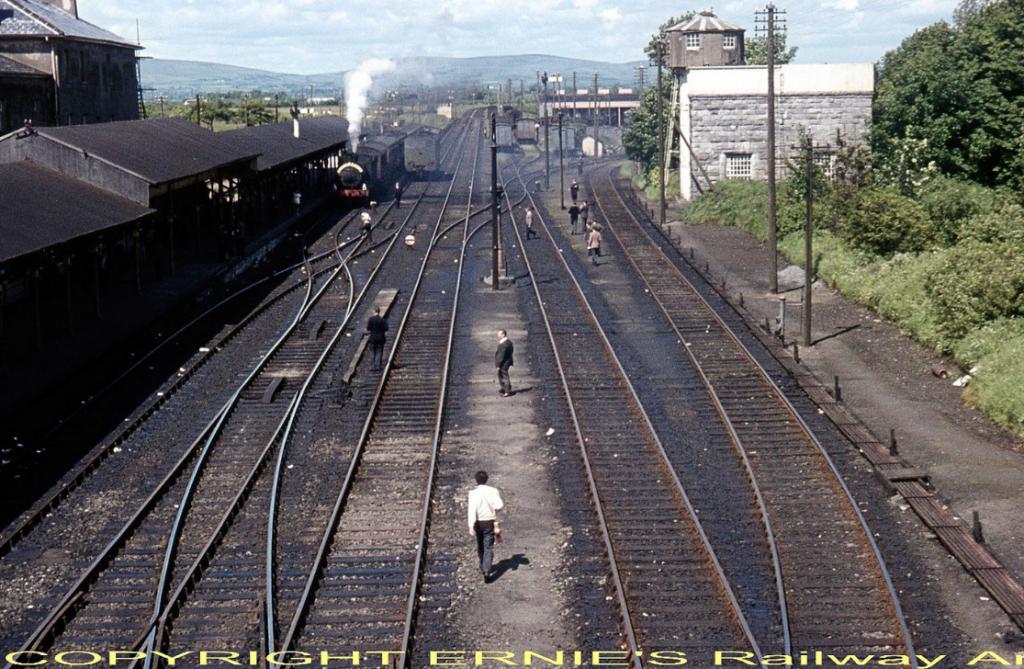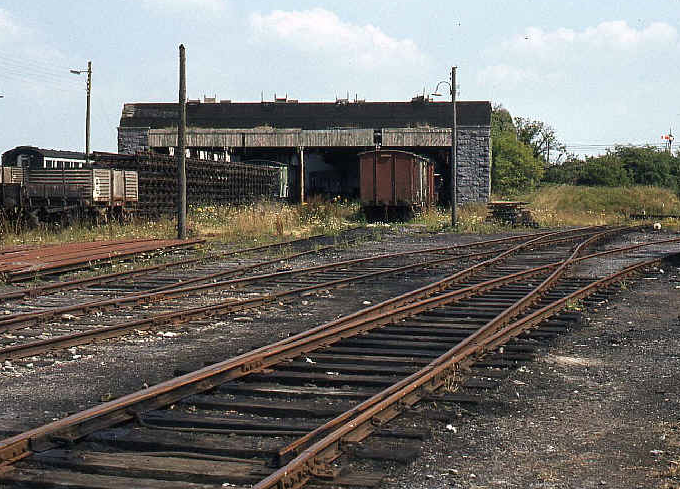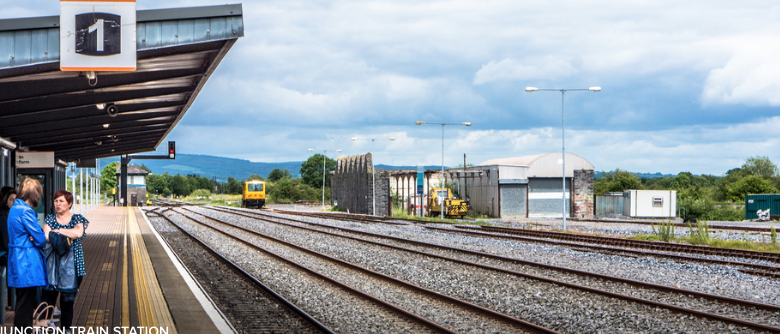
Junctionmad
-
Posts
1,136 -
Joined
-
Last visited
-
Days Won
1
Content Type
Profiles
Forums
Resource Library
Events
Gallery
Blogs
Store
Community Map
Posts posted by Junctionmad
-
-
So what did I travel in in 78-79 from LJ to Waterford which at that time was mostly non TL stock , Dutch with just HLV or 4 wheeler HLV( which I don't remember ) or just a GLV. With the generator off ?
-
I travelled on them in the late 70s behind Beet trains , they were rough inside
-
So there were no bogie HLVs. Were not some of the Dutch HLV only ?
-
I read through the sticky.
Whats not clear is what was used for NON-TL stock, like some cravens and parkroyals. These needed only a HLV ( heating luggage van) , Mention has been made to 4 wheel vans , but I don't remember those and I remember travelling in non-TL stock that had a bogie luggage van.
SO what was marshalled with these stock to provide steam heating only.
thanks , oh knowledgeable ones
-
What I meant was the series of decisions, that lead to the purchase of 201 class, a loco good for 40-50 years of service, to then have it effectively mothballed, when IR suddenly dumped loco hauled mainline trains ( in general) . Looking at the modern railcar sets , what the point in buying 125mph capable sets when thats only a pipe dream ( and its not the solution to rail issues in Ireland)
You only have to look at the "progress" of CIE/IR to see its run by engineers ( and Im an engineer) who like jackdaws, want a shiny new toy. IN private companies , this exuberance is kept in check by the commercial capital issues, in public company, there is a desert of capital, followed by a blizzard, stuff is then bought for all the wrong reasons and then in a few years in all got "grass growing through it again"
-
-
In my great quest to tie down the actual layout of the abandoned engine shed area at Limerick Junction, I formed an abiding view of the mess that irish railways are in.
The area must have been dug up about 4 times in 40 years , then let rot , then dug up then rot.
I mean
here it is in 64
Relatively nice and orderly , facing point lock covers etc, no weeds sidings usable
Then some bright spark in 69 churns up the engines sheds to weld continous rail
OK you think , investment , planning etc
And here it is a few years later !!!!
Then fast forward to today and they have changed it all again and under gone a refurbish to a PW department, even ballasting the siding beside the south cabin
This reminds me of the fiasco with the 201, etc and even mk3, IR engineers push for "favourite" projects, spend money , no real plan, then no money, all thrown to waste. This railway is just some engineers "latest toy " really ( like buying railcars that are capable of 125mph , yet not a screed of a budget to implement that , yet perfectly good locos left rusting )
And its no wonder Im bamboozled about the engine shed layout !!!
-
Chris Dyer advertises that he has ALL baby GMS in stock if his website is up to date (not sure if these are resprays)
http://www.chrisdyerfairs.co.uk/index.php?p=1_5_Direct-Sales
And if you read some old threads on this site you'll realize there are some hoarders that could probably help you out;)
Thanks, already emailed him
-
God damm , his picture of the signal board in the south cabin is cutoff. For a signal engineer he does not do a great job of " detail", but he does add some extras
As for the FPL, He at least confirms there was some " economical " FPLs. Hard to locate them since they didn't appear on the signal board unlike separate FPLs. Obviously the lever is blue black, but unless I can correlate levers to points,it will be difficult
Maybe I wrote to irish rail
My research continues
-
have a look at page 66 here
Thanks , I'm waiting for that book anyway
Are there specific LJ pictures ?
-
Looking for Black and Tan , super train livery livery. In perfect condition preferably. , will consider other liveries
Thanks
-
Working my way through the signalling. There's quite a few FPLs. I know in Ireland both the standard two lever and one lever " economical" types were used I suspect given the status of the mainline all FPLs at LJ were two lever ( ie one for the points and one for the lock ) anyone have any pictures of both types as used on manual signal boxes in Ireland
Thanks
-
Cork sheet was the tradition, the problem is that most people ballast by saturating the ballast with PVA , and that soaks into the cork rendering it rigid.
As mentioned , 3mm closed cell polyurethane foam sheet is a viable alternative , use something like copydex rather then PVA , ( though deep ballast will require PVA )
An alternative is rubberised cork, which is a gasket material, but again I don't know where 3mm sheets could be got from
I find the foam can " crush " which leaves dimples. But it's less dense and gives that prototype " float " !!
If you are using woodland scenics ballast that's doesn't transmit much sound. I once used real granite ballast on cork, boy was it noisy
-
Yes 4 over the next few months , preferably in weathered supertrain , but hey. In perfect condition.
Thanks
-
Is there any new stock of 141/181s preferably in super train livery around these days ? There must be demand for another production run
-
I'm working with templot at the moment , it's takes a bit of getting use to.
I going to try traxx 3 when the book arrives. Anyone tried it or previous version. That will be mainly to document the signalling etc
-
The timber swap bodies were fitted on 27301-27767 series 22'6" 14' wb skeletal flats the last 4w wagons built. These had a sightly lower frame to carry 8'6" containers and a longer wheelbase to improve stability at speed.
The channel framing of the swap bodies sat down over the wagon like a saddlebag and hid most of the wagon solebars and underframe.
Were these flat wagons donor or did cie custom build them , is there a picture anyway of the bare flat wagon
-
are they on 12 ' wheelbase flats, They don't look like the 20T container flats so were they derived from a different chassis ?
-
I thought all IR timber wagons were bogie types ?
By the way when were timber wagons introduced. I saw them in Waterford but it seemed recent
-
A couple of questions Junctionmad.
Will the rails need to be all bullhead or a mix of bullhead and flat bottom rail.
Are you going to use any ply and rivet sleepers in the build.
Do you want exact representations of the crossings and switches, ie ABCD size 1-6 1-7 and so on.
C&L point kits are a good place to start when wanting to put them together without any of the filing of track.
Exactoscale point kits are on another level altogether and come with all the chairs, slide chairs, bridge chairs, and the special chairs for the crossings and vee's. Personally if you want the track to look right in appearance then go for the Exactoscale kits.
Exactoscale and C&L also do sleeper bases of the concrete, and wooden type.
The Exactoscale wooden sleeper bases have little pimples on the sleepers where the chairs sit on them as the chairs all have holes on the underside. Even with this system if you are thinking of using one of the wider gauges then get some track building gauges.
Fran is spot on about re wheeling and compensating anything wider then EM gauge.
The only advantage I could see you being able to achieve in 00 gauge is being able to use bullhead rail and having the correct sleeper spacing. If you are happy with using all flatbottom rail then Pete Harvey produces a nice tool for spacing the sleepers correctly in Peco track.
Whatever the choice you make good luck.
Rich,
Let me say first off I'm a bit of a track nazi, it's my scenery that's crap !
Given the potential size of the layout. With in excess of 40 points I'll be starting slowly primarily looking at building the track work around the platforms.
To answer some questions
The pictures of LJ in the 80s show a mixture of code 75 bullhead and 82 flat bottom. My understanding is that nobody does flexi track that simulates flatbottom on wooden sleepers , exactoscale do chairs so to simulate this properly would be quite a chore
Hence I may do it in stages well see
As for point work ill make the vees and switch blades ( just bought a Proxxon vertical milling machine ! )
And use a combination of c&l and exactoscale chairs all on c&l plastic timbering.
I'm fling to order test track from all three companies and some peco too and my preference would be to lay the fiddle yards in peco, this of course kinda rules out OO-SF ( ie 1mm flange ways ) but I will build to 1.25 or as close as I can , giving me that prototype appearance at the point knuckles etc.
All the points will be switched by RC type servos. Frog polarity will be electronically switched. This is the best way for dcc , as you just forget about switching frogs. The track route is set as per the signalling and the frog polarities change dynamically as the wheels pass over. ( no use for DC layouts )
I cast no asparagus at anyone doing any form of track work. OO , EM , Peco, its just realistic track is my " thing "
However this layout is going to be severely compromised to fit into a reasonable length , with the main LJ facing platforms being cut down to holding about 4 carriages plus engine
This means tighter radius point work etc which again effects flange size and more importantly back to back measurements
As fir wheel and axle compensation , at P4 levels it's virtually required because you are running scale flanges and these are less then 0.25 mm
But in other gauges compensation helps to " sit " the wagon properly on the track with little wobbling etc.
I know the idea of finescale 00 is somewhat strange as was pointed out , EM might be a compromise , but it's rather like the 00 for 21mm track isn't it.
What has changed is the availability of production track in EM , it's just all them points !!!!!!
I love Noel's peco track I really do.
-
Harumph!!!

So you didn't like my trackwork then last week? Will I rip it all up and relay 21mm then? (i.e. when I've won the lotto and can employ a team to make all custom the trackwork and points so that I will have time to run some trains before I'm 90)

N gauge would enable a scale track plan for LJ!!!
Your tracks are lovely Noel just lovely
-
Could you use Peco Code 75? It would seem that a fair representation of the scissors layout could be achieved using this track:
[ATTACH=CONFIG]14945[/ATTACH]
Yes but I just can't as yet bring myself to cope with the appalling visuals of peco track. It just looks all wrong
-
Im evaluating the C&L plastic track for a potential Limerick Junction model. Has anyone any experience of this track in 00 , it means that Ill have to hand build upto 40 points , but hey it will keep me out of the pub for years
As a test track Im going to build the famous Limerick Junction Scissors , ballast and weather it etc with a metre of track each side , I haven't decided to make the crossing vees and switch blades, but thinking about it brings back lots of memories . given my eye sight is not the same as it was when I was 18, I might buy some pre made vees, though I expect the geometry of the scissors will mean a fair bit of scratch building.
I would be interested in getting anyones feedback on this track or / Exactoscale or SMP/Marcway etc .
Im currently using Templot to render a template for the scissors ( and the whole layout actually )
Does anyone know if the C&L or any of the others can be mated to Peco "fine scale" track, for fiddle yards etc. I'll ask C&L anyway
Im still getting over the shock of not going for full 21mm or even EM. ( but then my mate Noel will have lots of DCC Murphys models that could then "visit")!!
-
You are right about the signal controlling the exit from the loop, but it would be a Starter signal. The signal before this one, which would be before the loop, would be the Home signal, and would probably be a bracket signal, and probably have some form of shunting signals as well. The signal before that, well down the Limerick line, if there was one, would be the Outer Home.
OK, thats interesting
.png.c363cdf5c3fb7955cd92a55eb6dbbae0.png)




Generator cars for irish coaching stock - specifically HLV
in Questions & Answers
Posted
So for a layout circa 1980 ( +- 5 years), what would have been most likely behind non-TL parkroyals/laminates